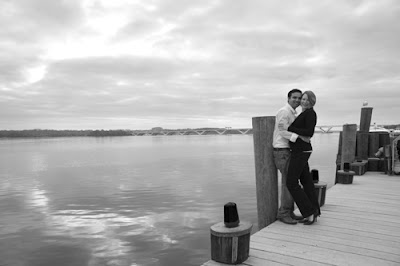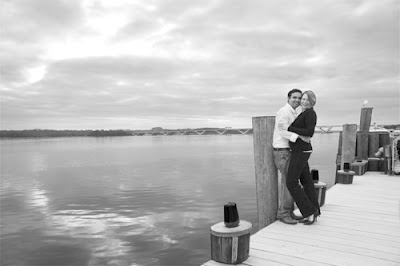First off I happy to announce that I have had two piece of my work accepted to two juried shows so far this year. The first show is in Raleigh, NC and the second is the annual Krappy Kamera show in NYC. KK is basically the big juried show for toy camera photographers and this is the second time I have had a piece accepted. Actually this only the second time I have entered work into the show. About 4 years ago I started entering my work to various juried shows and to Light Leaks magazine. Most photographers start submitting to these shows at some point. I stopped after the first year cost me more money than I had expected. I got caught up how cool it was to have my work accepted and entered more shows than I could afford. I actually find this whole thing a bit strange and for someone seeking validation of their skill or talent these shows can be costly not only from a financial stand point, but also from a confidence stand point. So here are my thoughts on what these shows are and are not. I would love to hear from all of you about your views and why you do or do not enter these types of shows.
WHAT THESE SHOWS ARE:
A CHANCE TO HAVE YOUR WORK HUNG IN A GALLERY
As a beginning photographer we all have the dream of our work hanging in a gallery and these shows provide this opportunity with out all the work of having a solo show. You don’t need a large portfolio or body of work, you don’t need to sell yourself to a gallery owner and convince them to give you a show or wall space. All you need is the money for the entry fee and if you get a piece accepted the money to frame and ship your piece to the gallery (if it is not local).
FINANCIAL HELP FOR THE GALLERIES
These shows provide money to small galleries supporting photography. Lets face it galleries do this to help keep their galleries going. Entry fees are non refundable and having a show like this can easily bring in a few hundred entries at $25-50 per entry. Regardless of how you feel about paying these fees, I see it as money well spent if it helps keep open a few venues that support the art that I love.
A CHANCE TO HAVE YOUR WORK SEEN
There is also the benefit of having your work seen by an audience that normally may not have a chance to see it. This is especially true if you submit to galleries outside your locality.
WHAT THESE SHOWS ARE NOT:
A VALIDATION OF YOUR TALENT OR SKILL AS A PHOTOGRAPHER
I see too many photographers either take it hard when their work isn’t accepted or feel like they have arrived when their work is accepted. There are many problems with this, but the main one is that in this setting work selected has almost nothing to do with skill or talent. A good gallery owner will most likely be selecting work they feel might sell. This show, especially if it toy camera specific, is a great advertising opportunity for them to potentially attract new customers. Add to this that there is no feed back in this process and you really have no basis to judge your worth as a photographer based on being accepted or rejected. I have been in shows were very few entrants we selected and shows where everyone got at least one piece in. I have yet to sell a print via one of these venues nor I have I ever had anyone contact me and tell me they saw my work because of one of these shows.
CHEAP FOR THE PHOTOGRAPHER
These shows are not exactly cheap. In general you have to pay an entry fee, they typically range from $10-$50. This buys you the right to enter your images. If you get selected you then have to pay for the print, frame, and shipping (to and from). Depending on the size of the framed print you could easily be looking at $50 for the frame and $50 for shipping. If you happen to sell a piece the gallery always gets a cut, typically between 20 and 40%. Say your piece is priced at around $200 if you do the math you’d be lucky to recover the price of the frame when all is said and done.
So given all of this why do I submit. I do not see these shows as a potential money maker for me, quite the opposite actually it is a bit of a drain on my wallet. I also think that the vast majority of people who go to see these shows are fellow photographers. And as you have figured out we don’t typically buy allot of art. So really I see this as fun and being part of a community. I get to praise friends when they get selected and if a show is local see some of their work in person. I do always hope that maybe this time I will sell a piece, but I don’t count on it. I see these shows also as a bit of a resume builder. To the outsider having a list of juried shows on your resume looks awesome, to a fellow photographer we all know what these shows say or don’t say about our art. I can tell you that it helped me get a weekend gig teaching photography at a local arts school where the person hiring me was not a photographer. I also do not really see these shows as good advertisement either. I see it allot like having this blog or being part of the toycamera.com forum, preaching to the choir. All of the people on these forums are already part of the photography community and most likely have already seen my work and being photographers yourself are likely to never buy my work just like I am unlikely to buy yours. Lets face it we can always put our own work on the walls much more cheaply and as photographers I am sure most of you think like I do when I see an awesome image, “I could do that” so if I really liked what you did I could probably recreate the image myself and hang it on the wall.
In the end I tell my students to not take these shows too seriously. Have fun with them and do not take acceptance or rejection for any type of commentary on their skills. In the end the only person who needs to be happy with your work is you. Now if you plan on making your living as a photographer you will actually need to convince people to pay for your services, but again these shows do not really provide any feedback on your work so it would be a bit silly to take anything away from them. So if you can have fun and not take rejection harshly I encourage everyone to submit to these shows. It can be fun and help you become part of the photography community.
Here are links to the galleries where my work will be shown, if you happen to go to either of these shows please take pictures and send them to me and let me know what you think of my work :)
http://rebusworks.us/exhibitions/plastic-cameraworks-2http://www.sohophoto.com/





 Image straight out of RAW editor
Image straight out of RAW editor After Level and Curve Adjustment
After Level and Curve Adjustment After Layer mask
After Layer mask





 Holga
Holga Holga w/ 2 stop ND filter
Holga w/ 2 stop ND filter
